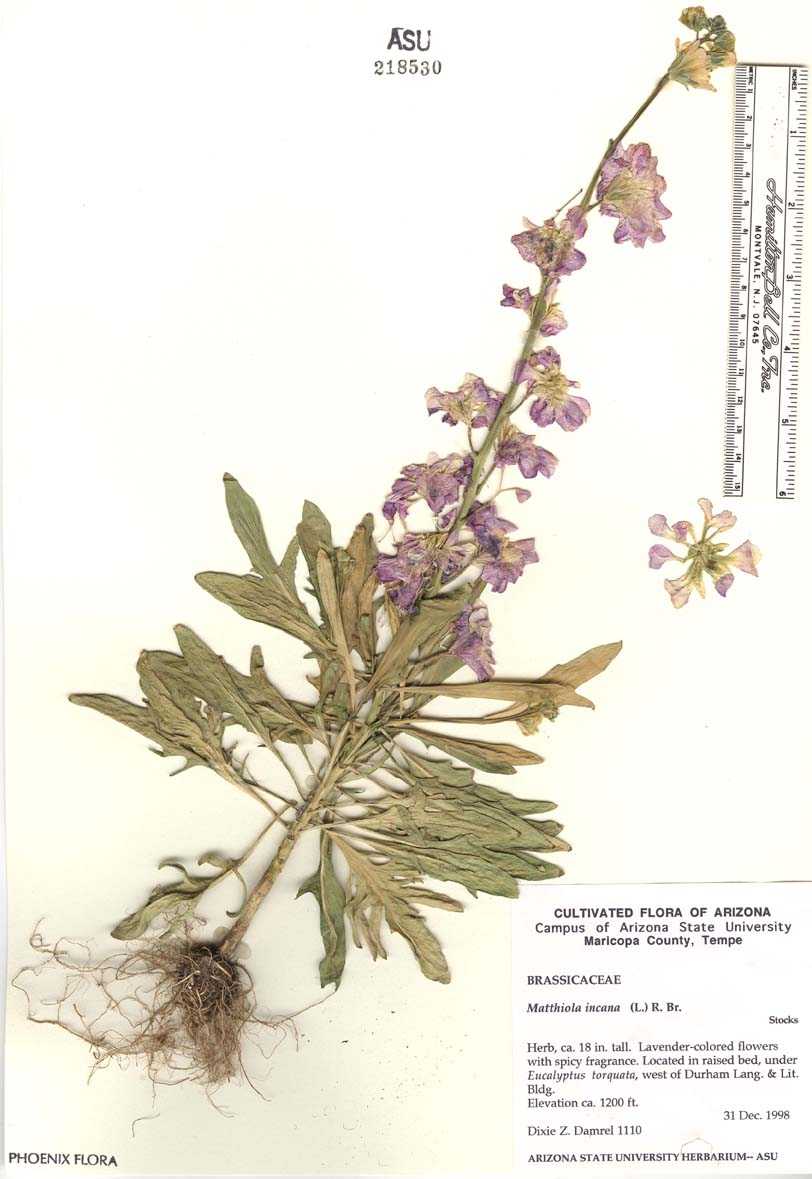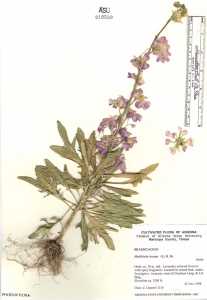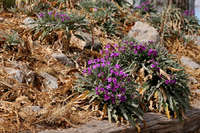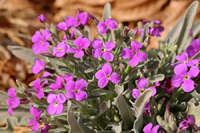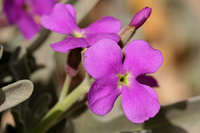Biennials or perennials, rarely annuals; usually densely tomentose. Stems erect, (1-) 2.5-6(-9) dm, (unbranched or branched distally), often tomentose. Basal leaves often in vegetative rosettes. Cauline leaves shortly petiolate or sessile; blade linear-oblanceolate, narrowly oblong, or lanceolate, (2.5-) 4-16(-22) cm × (5-)8-18(-25) mm (smaller distally), base attenuate to cuneate, margins usually entire or repand, rarely sinuate. Fruiting pedicels ascending, straight or slightly curved, (6-)10-20(-25) mm, thinner than fruit. Flowers: sepals linear-lanceolate to narrowly oblong, 10-15 × 2-3 mm; petals purple, violet, pink, or white, obovate to ovate, 20-30 × 7-15 mm, claw 10-17 mm (margin not crisped), apex rounded or emarginate; filaments 5-8 mm; anthers 3-4 mm. Fruits divaricate-ascending to suberect, latiseptate, (4-)6-12(-15) cm × (3-)4-6 mm; valves densely pubescent; style 1-5 mm; stigma without horns. Seeds orbicular or nearly so, 2.5-3.2 mm diam.; wing 0.2-0.5 mm. 2n = 14.
Flowering Mar-Jun. Ocean cliffs and bluffs, sandy areas near beaches, roadsides, abandoned gardens; 0-300 m; introduced; Calif., Tex.; Europe; introduced also elsewhere in the New World, Australia.
Matthiola incana is widely cultivated worldwide for its attractive, highly scented flowers.
Annual herb
Flowers: various colors.
Similar species: No information at this time.
Flowering: June to late September
Habitat and ecology: Introduced from Europe. A rare escape from cultivation. In the Chicago Region known only from Kendall and Grundy counties, both in Illinois. The Kendall County specimen was found on a rubbish pile.
Occurence in the Chicago region: non-native
Etymology: Matthiola is named after Pierandrea Mattioli, a 16th century Italian botanist and physician. Incana means "hairy; gray or silver colored."
Author: The Morton Arboretum


